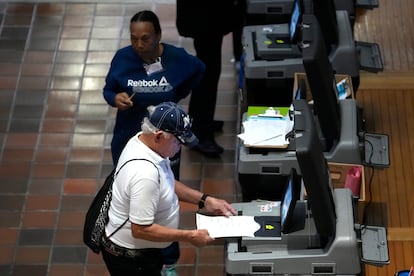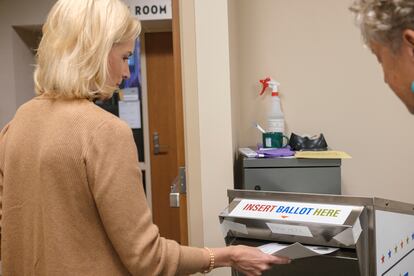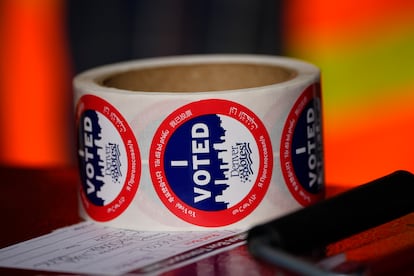As Election Day approaches, Americans across the country are gearing up for one of the most pivotal days in the democratic process. The countdown to the 2024 election has officially begun, with just days to go until voters cast their ballots in races that will determine not only the next president but also significant congressional and local leadership positions. Here’s what you need to know about the final preparations and what’s at stake.

Security and Voting Integrity
In recent years, election security has become a primary focus, and 2024 is no different. Federal, state, and local governments are deploying resources to safeguard against cyber threats, misinformation, and potential interference. Election officials nationwide are bolstering security measures for voting machines, especially in key battleground states. Advanced training for poll workers and collaboration with cybersecurity experts ensure every vote is counted accurately.
Expanded Voting Access and Turnout
The 2024 election cycle has seen an increase in early voting and absentee ballot options. Across many states, these efforts have improved accessibility, offering voters a range of options to participate without facing long lines or logistical hurdles on Election Day. With high voter turnout anticipated, officials are taking steps to streamline operations at polling locations, preventing long wait times and ensuring voters have a smooth experience.
Key Issues Driving Voter Interest
This election cycle is marked by intense debate on several critical issues, including healthcare reform, climate action, economic recovery, immigration, and civil rights. Economic concerns, especially inflation and housing affordability, are top of mind for many Americans. Meanwhile, shifts in foreign policy and national security concerns also have voters closely watching each candidate’s stance and proposed policies.
Social Media and Misinformation Management
In an age where news spreads at lightning speed, election authorities are focused on combating misinformation and ensuring voters receive accurate information. Social media platforms have implemented additional measures to flag unverified claims, and organizations are working around the clock to debunk election-related myths. Voters are encouraged to rely on credible sources and official channels to verify information regarding the election process, polling locations, and results.
Final Push for Voter Education
Voter education initiatives are at an all-time high, with non-partisan organizations and volunteers spreading awareness on everything from voter registration deadlines to polling place locations and ballot content. In a nation as diverse as the U.S., these efforts play a crucial role in ensuring everyone understands their rights and responsibilities.
Election Night: What to Expect
While many Americans are accustomed to immediate results, 2024 may be another year where patience is key. With mail-in ballots and increased turnout, official results in closely contested races could take longer to verify. Election officials and the media are urging the public to prepare for a potentially prolonged counting process, especially in key battleground states.
As Election Day nears, the stakes have never felt higher. Voting is not just a right but a responsibility, one that shapes the future of the nation. If you’re eligible, make sure you’re prepared to cast your ballot on November 5, and remember that every vote counts in shaping the country’s direction for the years to come.
With the U.S. presidential election just around the corner, millions of Americans are preparing to go to the polls to decide the country’s next leader. Vice President Kamala Harris and Minnesota Governor Tim Walz face off against former president Donald Trump and Senator J. D. Vance in a race that most polls show to be virtually tied. Voting procedures and rules vary from state to state, but there are some general guidelines and tips to follow no matter where citizens will be voting. Below, we explain the key information for Election Day and how to exercise your right to vote.
Where to vote
The polling place for each person is usually determined by their residential address, and can be found by using their state or county elections office website, visiting Vote.org or the U.S. Election Assistance Commission website. In many areas, polling places are set up in public buildings such as schools, community centers, churches or municipal buildings. It is important to confirm the polling location in advance, as locations change from previous years due to school schedules, building availability or other factors. Likewise, it is important to check your registration status before you go to vote, as some states may have voter ID requirements or other stipulations that should be taken into consideration.
What time do polls open and close?
Generally, election hours in the United States range from early morning to late evening, with many polling places opening between 6:00 a.m. and 8:00 a.m. and closing between 7:00 p.m. and 9:00 p.m. The exact hours are determined by each state and sometimes even vary by county. However, the exact hours are determined by each state and sometimes vary even by county. For example, polling stations in New York usually open at 6 a.m. and close at 9 p.m., while in California, they open at 7 a.m. and close at 8 p.m. If someone is standing in line at the polling place when it closes, they’re still entitled to cast their vote as long as they were in line before the official closing time.

What documents do I need?
Although most states do not require identification, some do. You need to check the voter ID laws of the state in which you are voting to make sure if they ask for certain documents. For example, Georgia, Indiana and Wisconsin require a government-issued photo ID, while others, such as Colorado and Florida, allow voters to present utility bills or other forms of identification. It is always a good idea to carry an ID, even if the state does not strictly require it.
If someone is registered to vote but does not appear on the voter list due to an error, they may be given a provisional ballot. This ballot allows you to cast a vote, which will be counted once your eligibility is confirmed. Provisional ballots ensure that no voter is turned away due to administrative problems.
How to mark your ballot
Ballot formats may vary, here are some of the most common ones and how they should be filled out:
- Paper ballots: They are marked manually by filling in an oval or by connecting a line next to the name of the candidate of choice. It is advisable to read the instructions carefully and double check each mark before sending the ballot. In states that use paper ballots, they are either scanned electronically or deposited directly into a secure ballot box for later counting.
- Touchscreen machines: Many states use electronic touchscreens to simplify voting, especially for people with disabilities. If a touch screen is used, it is necessary to confirm selections on the review screen before finishing. Some machines print a paper record that can be reviewed; if it does not match the choices made, assistance can be sought from a poll worker.
- Ballot marking devices: Some states use machines that allow selections to be made electronically and then a ballot is printed and can be sent for counting. The ballot can be reviewed before it is mailed to ensure that it reflects the voter’s choices.
Most ballots will contain choices for presidential candidates, congressional representatives, and state and local offices, as well as area-specific propositions or measures. Often, voting on ballot measures is simply a matter of checking “Yes” or “No,” so it is advisable to review the selection before moving on to the next section.

Common mistakes
It is easy to make a mistake when filling out the ballot, especially if you are voting under time pressure. Here are some basic tips to avoid making an incorrect selection.
- Follow the instructions exactly: Different voting systems may have unique rules on how to mark the ballot, so be sure to fill it out correctly.
- Do not overvote: Voting for more candidates than allowed in a single category may invalidate your vote for that particular race.
- Read ballot measures twice: Measures can be complexly worded, so it is advisable to read them carefully to make sure your vote matches your intent.
- Stay informed: Avoid bringing campaign material to the polling station, as it can sometimes be considered electioneering.
Poll workers can help if the voter has questions. Most places allow you to request a replacement ballot if a mistake is made on a paper ballot.
After voting
Some states offer real-time tracking of ballots, especially for absentee or mail-in ballots, so citizens can confirm that their vote has been received and counted.



